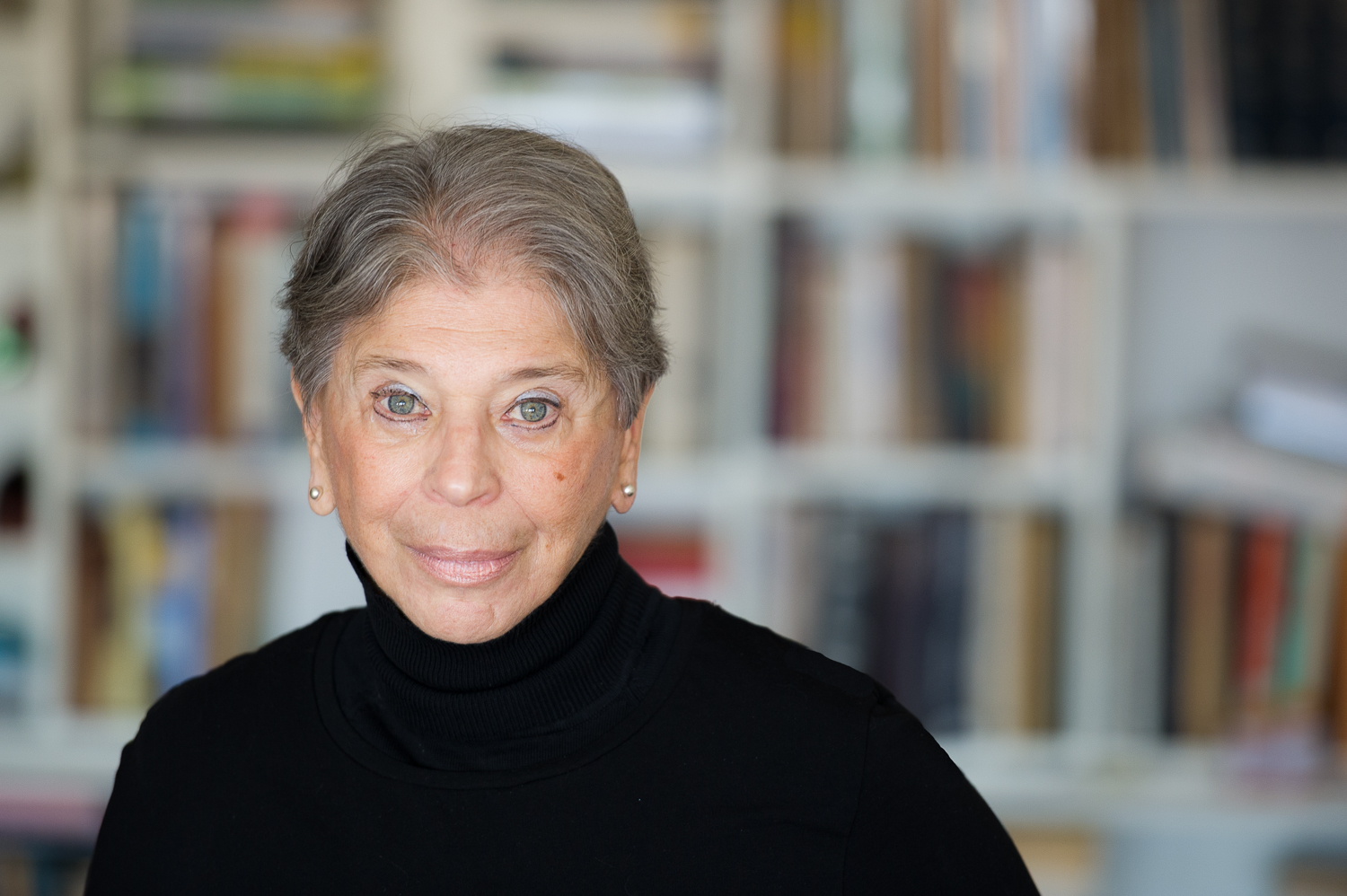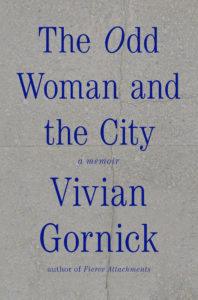
Vivian Gornick on Feminism, Friendship, Gentrification, and Our Mothers
E.J.B.: NOW will be celebrating its 50th anniversary in late June. What do you see as the most enduring success of 20th century feminism?
V.G.: I feel that we made a revolution. The world has changed immensely and millions of women are doing things they had previously thought were impossible. Think of it as running a four-minute mile. No one thought it was possible until someone did it and then lots of others followed suit. Feminism helped women imagine doing things they had assumed they couldn’t do. We made a new social reality and it has drenched the entire world.
E.J.B.: Did the anti-feminist backlash, especially around reproductive justice, surprise you?
V.G.: Abortion turned out to be one of the most primitive issues, so yes. Even though we’ve made progress, I was brought up short by the depth of resistance to women’s equality.
E.J.B.: Were you blind-sided by the failure of any other feminist objectives?
V.G.: If I feel discouraged in any way, it’s because, when we were young, I thought we were making a permanent community. It seemed to me that the word community genuinely applied to the feminists of the 1970s. Unfortunately, sustaining this community did not prove possible. The 1960s and 1970s were a visionary, revolutionary time and when the period passed, and the world did not change fast enough, our actual personalities took over and we went our separate ways. But feminism gave me my work, my foundation for living. I have no regrets, but of course I’m disappointed that the world did not progress as much as we wanted it to or expected.
One thing that does distress me, however, is that feminists today write about patriarchy and male privilege as if these things are new discoveries. They seem to have no sense that feminists have been protesting against sexual violence and mansplaining—even if we did not use this term—for centuries.
E.J.B.: Are you pleased that Hillary Clinton seems to have clinched the Democratic nomination?
V.G.: I was not initially a supporter of her, or of Bernie Sanders for that matter. Still, it feels good to hear her talk about breaking the glass ceiling and I admit that I teared up a bit hearing her speak about getting the nomination.
 E.J.B.: The Odd Woman and the City includes numerous vignettes about walking the streets of Manhattan, eavesdropping on conversations, and noting everyday interactions between both strangers and friends. Do you still walk as much? And do you still listen to the conversations buzzing around you?
E.J.B.: The Odd Woman and the City includes numerous vignettes about walking the streets of Manhattan, eavesdropping on conversations, and noting everyday interactions between both strangers and friends. Do you still walk as much? And do you still listen to the conversations buzzing around you?
V.G.: The book includes accounts of things I’ve seen or heard that go back about 20 years and I took notes after every conversation I had with my friend Leonard, the man whose presence is woven throughout the book. I included snippets of them in the text. I’m also a constant eavesdropper as well as an intervenor. When I’m out I often talk to strangers. I’m completely accustomed to the streets of the city. I’ve lived in various Manhattan neighborhoods over the last 50-plus years and I talk to anyone and everyone.
As for long-distance walks in the city, I started accidentally. I now walk about three miles a day but I used to walk six and began doing this 25 years ago. One day I had to go to the Upper East Side and I decided to walk up from the West Village. I’d been feeling somewhat depressed and I noticed that, by the time I’d walked to my destination, I wasn’t depressed anymore. Afterwards, I walked back home. I’ve found walking to be a cure for daily depression and walk pretty much every afternoon.
E.J.B.: Manhattan has obviously changed a lot over the last five decades. Are you happy about the constant development that is going on?
V.G.: I mourn the loss of Manhattan’s interwoven link between working and middle class lives. I’m really sad about the recession and never remember seeing as many empty storefronts as I do today. At the same time, I still find stuff here that restores my sense of humanity. Things happen here that don’t happen anywhere else. I’ve never been to a city as expressive as New York, not even London or Paris.
When I wrote The Odd Woman and the City, I hoped that it would be a contribution to urban literature, the walker in the city who feels the crowd and chronicles the meaning of strangers’ interactions.
E.J.B.: You took the title of the book from George Gissling’s 1893 novel, The Odd Women, about 19th century feminism. How did you discover the book?
V.G.: Someone in the feminist movement put it in my hands in the 1970s. It was widely read then and is a great book.
E.J.B.: Like most writers, you’ve periodically taken day jobs. Do you like teaching?
V.G.: I still live a freelancer’s life. Most years I manage to keep it together, but last year I took a semester-long job at the University of Iowa and I lived there for four months. I’ve also taught elsewhere, at the New School, Sarah Lawrence College, the University of Arizona, and Penn State. But I hate it! I don’t have a maternal bone in my body.
E.J.B.: Are there feminist issues that still get your blood boiling?
V.G.: When I experience a woman’s life not being taken as seriously as a man’s it gets to me. The presence of sexism gets my ass burning and I can still make a scene over it. I’m like that about anti-Semitism, too. When someone says something anti-Semitic in my presence, I don’t let it go. I always call it out.
E.J.B.: The Odd Woman and the City has gotten rave reviews across the board. Have any of the reactions been particularly gratifying?
V.G.: The variety of people who have responded positively to the book is amazing. It’s a shock and a pleasure to know that people all over the world are reading it. I did not expect this.
E.J.B.: What’s next for you?
V.G.: I’m now working on a different kind of book. It’s a re-reading of novels I loved as a younger woman. I started with Howards End by E.M. Forster. Years ago, when I first read it, I found it profound. In a recent re-reading I saw a lot of hokum and found some of the scenes unbelievable and yet I was still deeply moved overall. I wrote an essay about my reaction for the New York Times and it got noticed. This led to a book deal. I’m still working out the details but I will likely include D.H. Lawrence’s Sons and Lovers; Charlotte Brontë’s Villette; Virginia Woolf’s Mrs. Dalloway; and something by Delmore Schwartz. I’m looking forward to seeing how my tastes and opinions have changed.
In addition to The Odd Woman and the City, Gornick’s books include: In Search of Ali Mahmoud: An American Woman in Egypt [1973]; Essays in Feminism [1978]; Women in Science: Portraits from a World in Transition [1983]; Fierce Attachments [1987]; Approaching Eye Level [1996]; The End of the Novel of Love [1997]; The Situation and the Story: The Art of Personal Narrative [2001]; The Solitude of Self: Thinking About Elizabeth Cady Stanton [2005]; The Men in My Life [2008]; Women in Science [2009];and Emma Goldman: Revolution as a Way of Life [2011].
[Read Ilana Kurshan’s review of The Odd Woman and the City here.]



